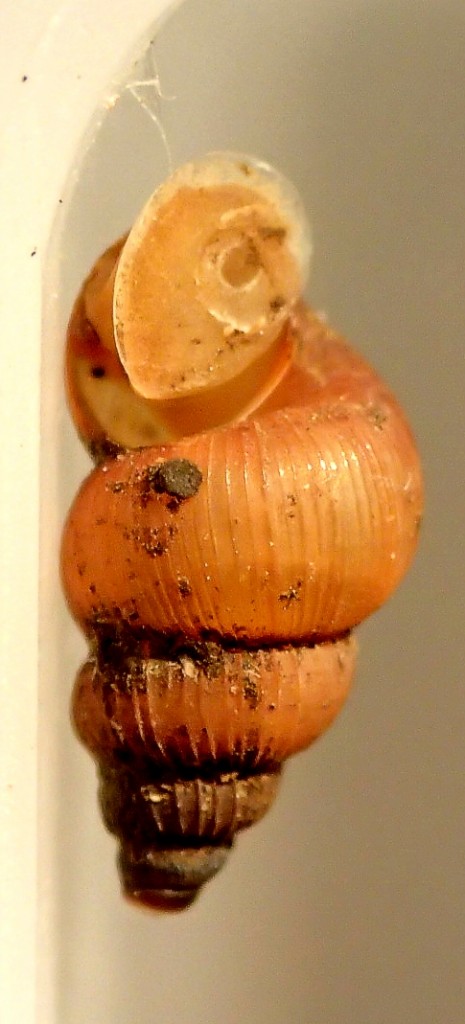As the holidays are upon us, it is comforting to know that even the lowliest creatures celebrate the season.
The Caribbean land snails in the family Annulariidae do a lot of strange things, but among the strangest is their propensity to hang upside down from a thread or threads of hardened mucus like Christmas tree ornaments. Why they do this is a mystery. But as near as we can tell, many of them do it – no matter where they are from: Cuba, Jamaica, Hispaniola, Puerto Rico, Curaçao, Guatemala – their entire zoogeographic range. This suggests that this odd behavior is quite ancient. The thread-spinning trait must have evolved very early on in the history of these snails before they dispersed throughout the Caribbean and Central America.
When do they do it? Well, they seem to do it at night and they will suspend themselves from caves, trees, walls – pretty much anything, including other snails. They secrete a mucus thread or threads from which they hang. To my knowledge no one has actually seen them do it. The previous evening they are crawling around, the next morning they are suspended. From where is the thread produced? Unknown. The snails have an operculum – a trapdoor attached to their foot that seals the shell opening when the animal is withdrawn. The operculum is clamped down on the thread suggesting that the animal does not have to expend energy holding on to the thread.
Why do they do it? No one knows. But the thread is very fragile – the slightest touch will break it, causing the snail to fall to the ground. The most plausible suggestion as to why they bother is that the behavior is an antipredator device. Any would-be predator crawling down the thread would cause the thread to break, thus losing the snail and their potential lunch. The fall apparently does not harm the snail; dented and broken shells are common in some species.
The photos below show some ornamental snails from Guatemala.
About the Author: Dr. G. Thomas Watters is Curator of Molluscs at the Museum of Biological Diversity.




